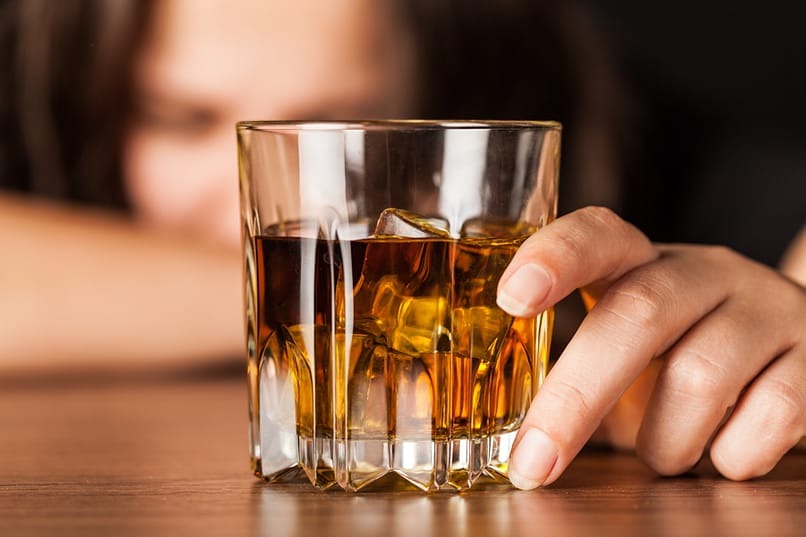An EtG (ethyl glucuronide) alcohol test is an alcohol screening method that checks whether a person has consumed alcoholic beverages within the few days leading up to the test. EtG tests are mainly used to document abstinence from alcohol, particularly in rehab programs and probation programs.
Learn the where’s and hows of EtG testing, its accuracy and its uses, how you can prepare for the test to ensure the most accurate results, and how Crestview can help you or your loved one along the road to recovery. Our alcohol rehab in Portland, Oregon, can help you recover from alcohol addiction and stay sober.
How Does an EtG Test Work?
Ethyl glucuronide is the residual by-product of alcohol made by the liver when it metabolizes the alcohol a person drinks. EtG deposits itself into blood, hair, nails, and urine for a significant period after a person drinks, even if they’ve stopped drinking for a few days.
This test measures the levels of EtG in a person’s urine (the most common sample taken) against certain levels that are the standard for reading results. The results a person may see, from high positive to negative, are explained in depth below.
EtG Test Results
Many factors can affect the outcomes of an EtG test, such as gender, weight, age, and more. Due to this, the following cutoff values are the standard for interpreting test results.
High Positive
A “high” positive EtG screen (for example, >1,000ng/mL) can reveal:
- Heavy drinking on the previous day or the same day
- Light drinking on the same day the test is carried out
Low Positive
A “low” positive EtG screen (for example, 500 to 1,000ng/mL) can reveal:
- Heavy drinking within the past three days
- Light drinking within the past 24 hours
- Recent extreme exposure to environmental or household products containing alcohol or ethanol (within the past 24 hours)
Very Low Positive
A “very low” positive EtG screen (for example, 100 to 500 ng/mL) can reveal:
- Heavy alcohol drinking within the last one to three days
- Light alcohol drinking within the past 12 to 36 hours
- Recent exposure to environmental products containing alcohol
Negative EtG Test
Negative EtG test results indicate that a person has not been exposed to ethanol or alcohol for the past five days preceding the test day.
If you are heading for a drug or alcohol screen, be mindful of potential factors that can trigger a false positive test result. This can include the aforementioned environmental or household products that contain alcohol or ethanol. It may be helpful to learn how long alcohol stays in your system.
Note that urinary tract infections (UTIs) can also lead to false positive screen results, though this only happens when the person tested also has diabetes.
How Long Can Alcohol Be Detected in the Body After Alcohol Consumption?
Different peoples’ bodies break down and expel alcoholic beverages, such as beer, wine, and whiskey, at different rates and intensities. This broken-down substance, EtG, is then absorbed into the bloodstream and affects the liver, lungs, kidneys, skin, and hair.
How long it takes for alcohol to leave your system, depends on several factors, such as your age, genetics, tolerance to alcohol, and other things. Heavy drinkers or people who have built up a high tolerance may expel alcohol much quicker than casual or first-time drinkers.
What Tests Are Used To Detect Alcohol?
Various tests can detect the presence of alcohol in the body.
- Ethanol Screens: Ethanol screens can detect alcohol metabolites in breath, saliva, sweat, urine, and blood immediately after the last drink up to about 80 hours.
- Urine Test: Urine tests can be used for up to 24 hours after the last drink, varying based on the amount consumed and recency.
- Breathalyzers: Breathalyzers are accurate for up to 24 hours after drinking.
- Saliva Test: Saliva tests remain effective for up to two hours after the last consumption.
- Hair Test: Hair tests can detect alcohol use for up to 90 days.

Get Help for Alcohol Addiction at Crestview Recovery
If you or a loved one is struggling with alcohol addiction, reaching out for help can be the first step towards recovery. Crestview Recovery offers individualized addiction treatment programs to aid in the journey towards a healthier, substance-free life.
EtG Detection Time Frame
Since EtG tests measure specifically for EtG and not alcohol, the sensitivity of the test strips allows for the detection of very low levels of EtG. This increases the time frame of showing that alcohol has been in the body for up to five days, though the accuracy tends to drop off after the first 24 hours.
What Are the Advantages of Using an Etg Alcohol Test Over Traditional Alcohol Tests?
EtG tests differ from alternative alcohol tests in that they can detect alcohol use within the body for longer periods. Most alcohol tests are only effective at indicating if a person is currently intoxicated or has imbibed alcohol within the few hours preceding the test.
The EtG test can detect whether a person has consumed alcohol within the past 24 hours or longer, though this depends on how quickly a person’s body processes and eliminates EtG. Though some tests have shown that EtG tests can detect alcohol in the body for up to 80 hours after a person drinks, 24 hours is the preferred cut-off where these tests are most reliable and accurate.
Limitations of a EtG test
EtG tests do have limitations and see decreased accuracy in certain situations. Products containing alcohol or ethanol, such as mouthwash or cleaning products, can trigger inaccurate results. This means that EtG test results may show that you have been drinking alcohol when you haven’t.
Other factors can affect how rapidly EtG is eliminated from the body, such as your gender, weight, age, prevalent medical conditions, medications you’re taking, or genetics. This means that two or more people who drink the same amount of alcohol at the same time can show vastly different results with EtG tests taken at the same time.
What Is an Etg Alcohol Test Used For?
The EtG test is used for situations where you need to prove that you have not been drinking alcohol for a certain period. For example, some people who are in treatment programs, probation programs, or professional monitoring programs may need to take the EtG test to show that they are following the rules and staying sober. The EtG test may also be used for court cases, liver transplant patients, schools, or the military. However, the EtG test is not recommended for workplace testing because it does not measure how impaired you are from alcohol.
EtG tests are used for cases where a person needs to prove abstinence from alcohol for a specific time. Note that the EtG test cannot measure a person’s impairment from alcohol, and this makes it unsuitable for workplace alcohol use testing.
Situations that prohibit alcohol drinking are where EtG tests excel. Some such situations may be:
- Alcohol treatment programs
- Court cases (such as child custody hearings)
- DUI or DWI programs
- Liver/kidney transplant patients
- Probation programs
- Professional monitoring programs (such as airline pilots, healthcare professionals, and attorneys)
- The military or schools
What Factors May Affect The Results of an EtG Test?
Personal habits such as using hygiene products or household cleaning products that contain ethanol or other alcohol variants within the few days leading up to an EtG test can affect the results and trigger false positives.
Preexisting medical conditions, such as a person who suffers from diabetes as well as a UTI can lead to false positive screening results, though these cases are rare.
Is the Etg Alcohol Test Considered Reliable in Detecting Recent Alcohol Use?
The EtG test is a popular method for checking for alcohol use in the body, predominantly because it can detect alcohol in the urine for longer periods than other tests. EtG tests, however, suffer several drawbacks and suffer reliability in certain situations.
There are very many daily use substances that contain alcohol and can trigger a false positive test result. Home and environmental products that contain measures of alcohol are:
- Aftershave
- Breath sprays
- Certain cleaning products
- Cosmetics
- Face wipes
- Foods flavored with or prepared with alcohol (Like wine-braised meats or rum cake)
- Hair dye
- Hand sanitizers
- Hygiene products (like antiperspirants)
- Mouthwashes
- Nail polish remover
Hundreds of common household products contain alcohol or ethanol. Use of any such products before undergoing an EtG test can lead to falsely positive results.
However, the EtG test result accuracy is approximately 70%, with one study showing 85% for people who drink moderately or heavily.
Steps To Ensure An Accurate EtG Alcohol Test
There are several practices that a person can use to ensure accurate EtG test results. Some of these are:
- Abstain from drinking alcohol for the week leading up to your scheduled EtG screen.
- Avoid using any personal or environmental products that contain alcohol or ethanol, such as alcohol, hand sanitizer, or cosmetics for the days before and the day of the EtG test.
- Check the labels of any products for any alcohol or ethanol-containing ingredients such as denatured alcohol, methylated spirit, ethanol, or isopropyl alcohol. Inform the test administrator if you have been exposed to any such substances.
- Drink enough water to maintain hydration before the test. There is a common myth that drinking enough water can flush the presence of EtGs from the body completely, but this is false.
- Avoid any dietary supplements or diuretics that affect your urine production or composition.
- Carefully follow the procedures and instructions of the EtG tester.
How Are Etg Alcohol Test Used in Alcohol Treatment Programs?
Addiction treatment programs in Portland may use Etg testing to monitor individuals and hold them accountable for their sobriety. Since the EtG test screens for the presence of alcohol in the body and not the impairment levels brought on by drinking alcohol, it is the preferred method for alcohol screening in alcohol treatment programs. EtG tests are the best screening method for documenting alcohol abstinence and help confirm that a person is sticking to their personalized rehab program.
Alcohol Treatment Program at Crestview
Alcohol dependency and addiction can be very physically, emotionally, and psychologically damaging to a person’s life. People suffering from alcoholism can feel very alone, unloved, and desperate. But there is hope.
Crestview’s treatment programs are specially structured to help addicts, their loved ones, and their families recover from the damage and start to heal. Contact us to book admissions, visit the facilities, or speak with one of our experts on managing and coping with alcohol addiction for you or a loved one. Let our caring staff accompany you and lead you on to live a healthy, sober, and fulfilling life.

Since 2016, Dr. Merle Williamson, a graduate of Oregon Health Sciences University, has been the Medical Director at Crestview Recovery, bringing a rich background in addiction medicine from his time at Hazelden Treatment Center. He oversees outpatient drug and alcohol treatments, providing medical care, setting policies, detox protocols, and quality assurance measures. Before specializing in addiction medicine, he spent 25 years in anesthesiology, serving as Chair of Hospital Pharmacy and Therapeutics Committee and Chief of Anesthesia at Kaiser Permanente. This experience gives him a unique perspective on treating prescription drug addiction.









